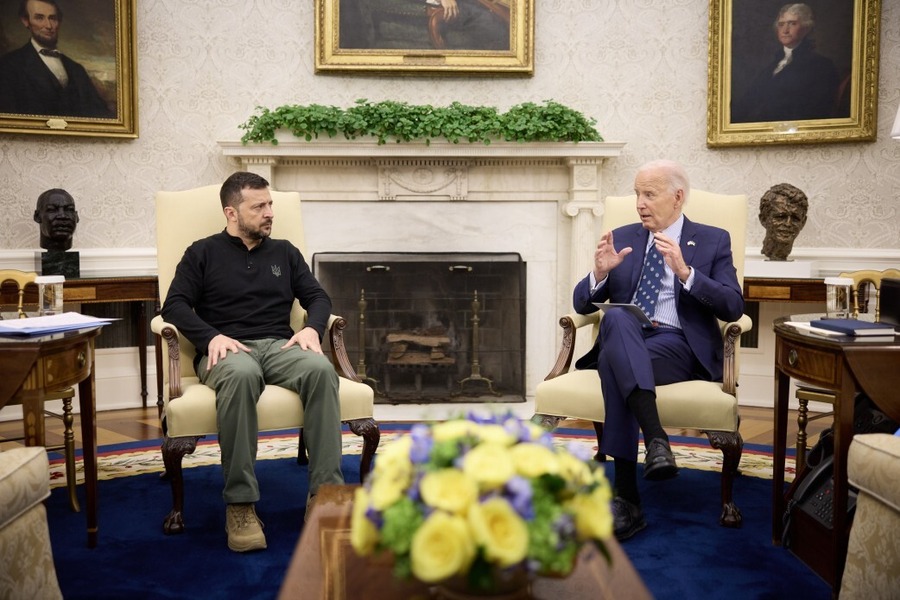A Quick Primer on AUMFs
Via Ilya Somin at Volokh, I see that the administration has proffered its proposed Authorization for the Use of Military Force (AUMF) for Syria. Now it is Congress’s turn to decide what proposal(s) it wants to debate and possibly approve. And it appears that the scope of the authorization will be an issue in Congress.
Published by The Lawfare Institute
in Cooperation With

Via Ilya Somin at Volokh, I see that the administration has proffered its proposed Authorization for the Use of Military Force (AUMF) for Syria. Now it is Congress’s turn to decide what proposal(s) it wants to debate and possibly approve. And it appears that the scope of the authorization will be an issue in Congress. For example, Senators Graham and McCain have announced that they will not support a narrow AUMF supporting only isolated strikes, and some members of Congress surely will not support one that is that broad.
An article that I wrote with Curt Bradley, which examined AUMFs throughout American history, provides a framework for understanding AUMFs. (And the Lawfare Wiki collects many historical AUMFs and declarations of war, here.) AUMFs can (as Bradley and I argued on pp. 2072 ff.) be broken down into five analytical components:
(1) the authorized military resources; (2) the authorized methods of force; (3) the authorized targets; (4) the purpose of the use of force; and (5) the timing and procedural restrictions on the use of forceMost AUMFs in U.S. History – for example, AUMFs for the Quasi-War with France in the 1790s, for repelling Indian tribes, for occupying Florida, for using force against slave traders and pirates, and many others – narrowly empower the President to use particular armed forces (such as the Navy) in a specified way for limited ends. At the other extreme, AUMFs embedded within declarations of war (here is the one against Germany in World War II) typically authorize the President to employ the entire U.S. armed forces without restriction except for the named enemy. The Gulf of Tonkin Resolution for Vietnam was also famously broad, as was the 2002 AUMF for Iraq, although the latter did require the President to make certain diplomatic and related determinations, and to report to Congress. Narrower AUMFs in the post-World War II era include the one in 1955 for Taiwan (narrow purpose and timing limitations) and the 1991 Iraq AUMF (narrow purpose and many procedural restrictions). Narrower yet were AUMFs for Lebanon in 1983 and Somalia in 1993, both of which had a very narrow and restrictive purpose, and which contained time limits on the use of force. And of course there is the relatively broad AUMF that everyone knows, from September 18, 2001. Bradley and I summarized historical AUMFs as follows:
This survey of authorizations to use force shows that Congress has authorized the President to use force in many different situations, with varying resources, an array of goals, and a number of different restrictions. All of the authorizations restrict targets, either expressly (as in the Quasi-War statutes’ restrictions relating to the seizure of certain naval vessels), implicitly (based on the identified enemy and stated purposes of the authorization), or both. Such restrictions may be constitutionally compelled. Congress’s power to authorize the President to use force, whatever its scope, arguably could not be exercised without specifying (at least implicitly) an enemy or a purpose. The primary differences between limited and broad authorizations are as follows: In limited authorizations, Congress restricts the resources and methods of force that the President can employ, sometimes expressly restricts targets, identifies relatively narrow purposes for the use of force, and sometimes imposes time limits or procedural restrictions. In broad authorizations, Congress imposes few if any limits on resources or methods, does not restrict targets other than to identify an enemy, invokes relatively broad purposes, and generally imposes few if any timing or procedural restrictions.
Jack Goldsmith is the Learned Hand Professor at Harvard Law School, co-founder of Lawfare, and a Non-Resident Senior Fellow at the American Enterprise Institute. Before coming to Harvard, Professor Goldsmith served as Assistant Attorney General, Office of Legal Counsel from 2003-2004, and Special Counsel to the Department of Defense from 2002-2003.




.jpg?sfvrsn=8588c21_5)
